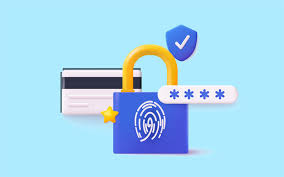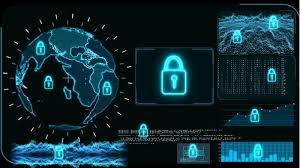In today’s fast-paced digital landscape, online banking has become an integral part of financial management. With the convenience of handling transactions from anywhere, it is essential to prioritize security measures that protect your sensitive information. Cyber threats are evolving rapidly, making it crucial to adopt best practices to ensure your online banking security remains uncompromised. This guide will walk you through essential steps to protect your finances in the digital age.
Understanding the Importance of Online Banking Security
Online banking security is more than just a necessity; it is a critical aspect of protecting your financial well-being. Cybercriminals are constantly seeking vulnerabilities to exploit, and any lapse in security can lead to significant financial loss. By implementing the right security measures, you can mitigate the risks associated with digital banking and safeguard your hard-earned money.
The rise in cyberattacks highlights the importance of staying vigilant. Phishing scams, identity theft, and malware attacks are among the most common threats faced by online banking users. With proper security awareness and proactive measures, you can significantly reduce the chances of falling victim to these cyber threats.
Creating Strong and Unique Passwords
A strong password is the first line of defense against cybercriminals attempting to access your online banking account. Weak passwords make it easier for hackers to gain unauthorized access, leading to financial loss and identity theft. It is essential to create passwords that are unique, complex, and difficult to guess.
Using a combination of uppercase and lowercase letters, numbers, and special characters enhances the strength of your password. Additionally, avoid using easily guessable information such as birthdates or common words. Consider using a password manager to securely store and manage your credentials without compromising security.
Enabling Two-Factor Authentication (2FA)
Two-factor authentication (2FA) provides an added layer of security by requiring an additional verification step beyond just a password. This could be a one-time code sent to your mobile device, a biometric scan, or an authentication app. Enabling 2FA ensures that even if your password is compromised, hackers cannot access your online banking account without the second authentication factor.
Most banks now offer 2FA as a security feature, and it is highly recommended to activate it. This extra step may seem inconvenient at times, but it significantly enhances your online banking security and prevents unauthorized access.
Recognizing and Avoiding Phishing Scams
Phishing scams are a common tactic used by cybercriminals to deceive users into providing sensitive banking information. These scams often come in the form of fraudulent emails, messages, or websites that mimic legitimate financial institutions. Falling for a phishing scam can lead to identity theft, unauthorized transactions, and financial losses.
To avoid phishing attempts, always verify the sender’s email address before clicking on links or downloading attachments. Avoid responding to unsolicited requests for personal or financial information. If you receive a suspicious message claiming to be from your bank, contact your bank directly to confirm its legitimacy.
Keeping Your Banking Software and Devices Updated
Outdated software and operating systems are more vulnerable to cyber threats. Banks frequently release security updates to protect against new threats and vulnerabilities. Keeping your banking apps, browsers, and operating systems up to date ensures that you have the latest security patches in place.
Enable automatic updates on your devices to stay protected against newly emerging threats. Additionally, install reputable antivirus software to add an extra layer of security against malware and phishing attacks that target online banking users.
Using Secure Networks for Online Banking

Accessing your online banking account over unsecured public Wi-Fi networks increases the risk of cyber threats. Hackers can intercept data transmitted over public networks, potentially gaining access to your login credentials and personal information. It is crucial to avoid conducting banking transactions over public Wi-Fi.
If you must use a public network, consider using a virtual private network (VPN) to encrypt your data. A VPN adds an extra layer of security by masking your online activities, ensuring that sensitive information remains protected from prying eyes.
Monitoring Account Activity Regularly
Regularly reviewing your bank statements and account activity can help detect unauthorized transactions early. Cybercriminals often make small fraudulent transactions to test whether an account is being monitored before making larger withdrawals. By keeping an eye on your transactions, you can quickly report any suspicious activity to your bank.
Setting up account alerts can also help you stay informed. Many banks offer notifications for transactions, logins, and changes to account details. These alerts can provide real-time updates and help you take immediate action if any unusual activity is detected.
Avoiding Auto-Save for Banking Credentials
While browsers and apps often offer to save login credentials for convenience, this feature poses a security risk. If your device falls into the wrong hands or is infected with malware, stored credentials can be easily accessed and misused.
Instead of relying on auto-save, use a trusted password manager that encrypts and securely stores your banking passwords. This adds an extra layer of security and reduces the risk of unauthorized access to your online banking accounts.
Logging Out After Each Banking Session
Always log out of your online banking session when you are finished, especially when using shared or public devices. Staying logged in increases the risk of unauthorized access, particularly if the session remains active on a device that is not securely managed.
Most banks implement automatic timeouts for security reasons, but manually logging out ensures an added layer of protection. It is a simple yet effective practice that minimizes security risks associated with unattended banking sessions.
Setting Strong Security Questions and Answers
Many banks use security questions as an additional authentication method. Choosing strong security questions and answers that are not easily guessable enhances your account security. Avoid using information that is publicly available, such as your mother’s maiden name or your pet’s name, as hackers can often find such details through social media.
Instead, create answers that are unique and not directly related to the question. You can even use a random phrase or a password manager to store and retrieve complex answers for added security.
Educating Yourself on Emerging Cyber Threats
Cyber threats are constantly evolving, and staying informed about new attack techniques can help you remain vigilant. Many financial institutions provide educational resources on online banking security, including fraud awareness campaigns and security best practices.
Subscribing to cybersecurity newsletters, attending webinars, or following reputable sources can keep you updated on the latest security trends. The more you know about potential threats, the better equipped you will be to protect your financial assets.
Conclusion
Online banking security should be a top priority for anyone managing their finances digitally. By implementing strong passwords, enabling two-factor authentication, recognizing phishing attempts, keeping software updated, and using secure networks, you can significantly enhance your financial safety. Regularly monitoring your account activity, avoiding auto-save features, logging out after sessions, and staying informed about emerging threats further solidify your defenses against cyber risks.
By following these best practices, you can confidently navigate the digital banking landscape while keeping your finances secure. Proactive security measures and continuous awareness are key to safeguarding your financial assets in the ever-evolving world of online banking.


